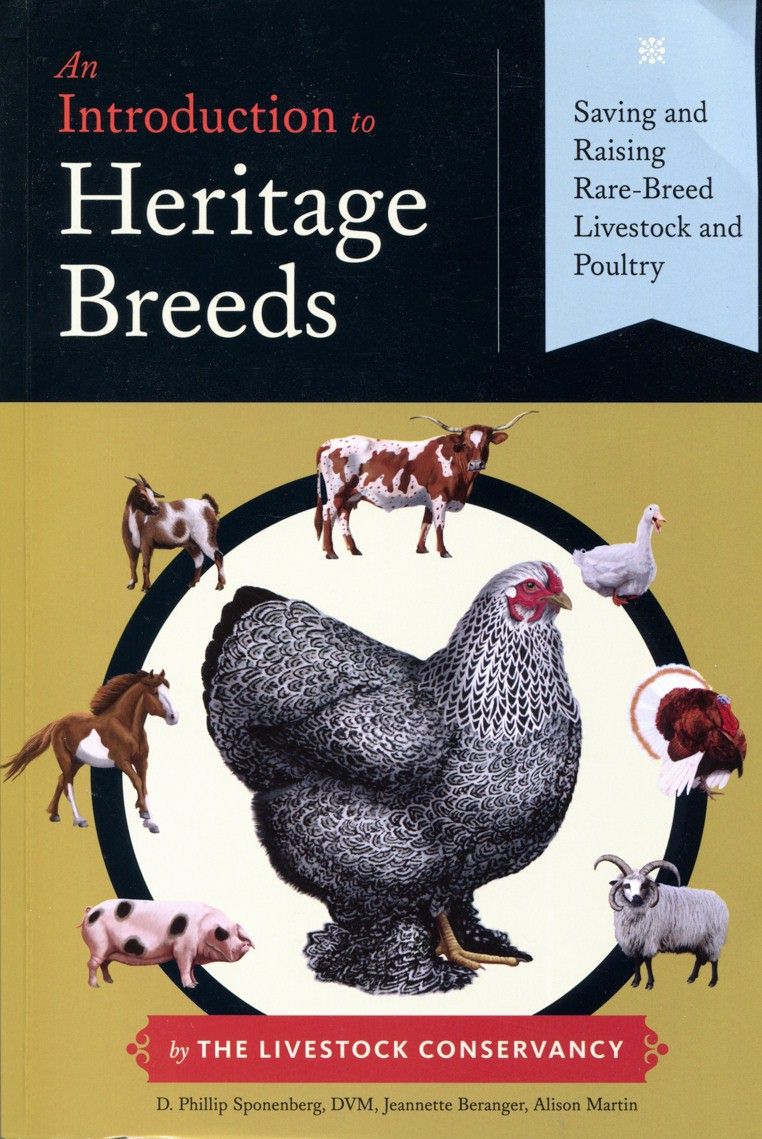An Introduction to Heritage Breeds
Dr. Phillip Sponenberg, Jeanette Beranger, Allison Martin

Available at Amazon.com
Though the genetic legacy in these breeds is a key to the future, heritage breeds are now critically endangered. Heritage breeds share a common link of history, original ancestors (foundation) and overall body type, all which work together to result in a reasonable degree of genetic uniformity.
Purebred animals predictably reproduce their breed type, both in appearance and performance, when mated with one another. This predictability of appearance, ability and function through generations is the essential key to the importance of breeds.
The fascinating history of heritage breeds goes back at least ten thousand years to the handful of areas of the globe where agriculture began and the earliest farmers first domesticated the now familiar species of farm animals. As a matter of necessity owners quickly learned to keep and breed only those indivisual animals that thrived and provided a good return on the investment of feed, shelter and labor.
TERMS TO KNOW
Genetic Diversity. Variation within a breed. Some diversity is obvious, such as color. Less visible traits include disease resistance, foraging ability and agreeable behavior.
Uniformity. Lack of variation within a breed. On the positive owners can accurately predict performance. On the negative side if goals or the environment changes uniform populations may not have the genetic code for adaptation to new challenges.
Variability. The tendency of traits to vary in response to environmental ang genetic influences. Variability can occur within a single breed, so that some animals look and perform differently so that owners can choose which option best fits their needs.
Why Heritage Breeds Are In Trouble
Unfortunately for the survival of Heritage Breeds agriculture has changed more in the past century than in the previous 10,000 years. Diversified farming based on adaptation to local conditions is being replaced by the trend to make systems the same everywhere on the planet. This approach requires confinement of animals, standardized feeds and only the few modern breeds that produce the most in such systems. Thus the development of more and more breeds, each better adapted to specific regions and multiple purposes has been reversed. Heritage breeds, and with them their rich genetic diversity are disappearing rapidly.
BREEDING TERMS TO KNOW
Breeding. Selecting animals and mating them to produce the next generation.
Crossbreeding. Mating animals of two different breeds.
Culling. Removing animals from the reproducing population. This may involve slaughter for many species, but for horses can include gelding extra males.
Inbreeding. Mating animals that are closely related, usually first-degree relatives such as parent/offspring or brother/sister.
Linebreeding. Mating animals that are related, but not as closely as first-degree relatives.
Outbreeding. Mating animals that are not related – a general catch-all-term that covers both crossbreeding and outcrossing.
Outcrossing. Mating animals that are not related and that are from two different bloodlines within a single breed.
Selection. The process of choosing some animals for reproduction, and removing (culling) other animals form the reproducing population.
Copyright © Cross Creek Welsh Ponies 1969
All Rights Reserved